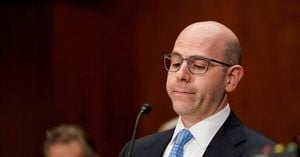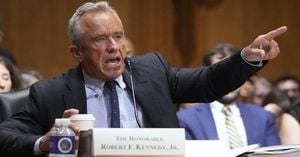Rising energy costs are set to put increased pressure on consumers, as utility companies propose significant rate hikes to meet demands for infrastructure enhancements and respond to higher operational costs. Con Edison, serving over nine million customers across New York City and Westchester County, has submitted a proposal to the New York State Public Service Commission for average increases of 11.4% for electric bills and 13.3% for gas bills starting January 1, 2026.
The utility cites the need to raise approximately $1.6 billion for electric delivery system upgrades and $400 million for their gas infrastructure as primary reasons for the proposed hike. According to Matthew Ketschke, Con Edison’s president, the investment will support reliability and clean energy infrastructure necessary to accommodate rising demands stemming from electrification of buildings and transportation, with more customers opting for electric heat pumps and vehicles aligning with New York's climate goals.
Ketschke stated, "Con Edison is proud to serve more than 9 million people... supporting the... economic, health, and transportation networks..." The utility company also plans to improve outreach to low-income New Yorkers, seeking additional funding for its Energy Affordability Programs to mitigate the impact on economically vulnerable households.
At the same time, Governor Josh Shapiro of Pennsylvania has taken steps to address similar energy cost challenges impacting consumers across regions managed by PJM. Following a recent auction prediction forecasting an 800% increase affecting electricity prices, Shapiro announced efforts to implement a price cap aimed at reducing potential utility bill increases by capping costs at $325 per megawatt day instead of $500.
Shapiro expressed concern over the anticipated price hikes, stating, "When PJM’s next auction was set to result in historic price hikes, I filed a lawsuit to stop this price hike on consumers and defend Pennsylvanians," as reported by The Center Square. This proactive approach has received backing from Democratic governors across four other states within PJM’s jurisdiction, reflecting collective concerns about the financial burden on their constituents.
Utilities have reported seeking funds for system upgrades, with historic rate hikes observed nationwide. The Energy Information Administration (EIA) indicated utility rate increases approved by regulators surged from $4.4 billion in 2022 to over $10 billion by 2023. Regulatory Research Associates, which tracks utilities’ rate requests, said by the end of 2024, more than $12.7 billion had been filed for approval, with projections indicating around 70% of these requests are likely to be accepted.
Increasing demands for electricity are driven, among other factors, by the tech industry's growth, particularly the need to power extensive data centers requisite for advanced technologies like artificial intelligence. Concurrently, the frequency of extreme weather events has heightened concerns, pushing utility providers to invest significantly to safeguard their infrastructure against potential damages, costs often shifted to consumers.
Diving deep, Regulatory Research Associates’ senior research analyst, Dan Lowrey, noted, "[Regulatory Research Associates] has been tracking rate cases since the early 1980s... 2023 was the most amount of rate increases requested in our history." Emerging operational costs are expected to continuously challenge consumers as regulatory bodies seek to balance the demand and supply equations effectively.
On the horizon, future projects focusing heavily on renewable energy resources are underway, but challenges remain. While PJM anticipates accelerating the approval of new projects to replace retired fossil fuel plants, lengthy permitting processes and fluctuated supply chain costs could delay these initiatives significantly.
The interplay between energy production strategies raises apprehensions. Pennsylvania's leading role as both energy exporter and natural gas producer invites scrutiny, especially following recent legal challenges surrounding environmental initiatives aimed at curbing pollution. Previously led by former Governor Tom Wolf, Pennsylvania’s directions altered the energy investment judicially contested within its legislative frameworks, creating uncertainty among stakeholders. Shapiro’s administration has committed to reform passively seeking approval from lawmakers to push such initiatives forward.
Given the interconnectedness of energy production and demand, rising energy costs not only affect utility bills but create broader economic ripples throughout affected regions. With infrastructure steadily needing modernization alongside increasing demands, the urgency for legislative clarity and consumer protection grows daily. Consumers are advised to explore alternative solutions such as solar energy to mitigate rising costs. Investing in such initiatives could reshape their dependence on the grid and contribute to eco-friendly practices.



